Electromagnetic treatments of materials, such as heat treatment by induction or electromagnetic stirring, are techniques commonly used in industry. They reduce the associated energy consumption, while improving the properties of previously manufactured parts. Moreover, the complexity of the physical principles involved makes the use of digital simulation essential if these processes are to be understood and optimized.
Towards automatic mesh refinement
As models become increasingly realistic, the complexity of the simulations increases. One of the main challenges is automatic mesh refinement as a means to reduce the "concept-to-production" time, while facilitating the engineering process.
Before addressing automatic remeshing on an electromagnetic simulation, we must first tackle "error estimation".
What is error estimation?
As the name suggests, the aim is to estimate the difference between the numerical solution and the "exact" solution. Since the latter is, by definition, impossible to determine in generic cases, the error estimate is based on a comparison between two approximations of the same physical field (temperature, speed, deformation, magnetic field, etc.) to find which regions of the model have the largest deviation.
Typically, the solution obtained by direct resolution of the finite elements is compared to a so-called "enriched" solution. This solution is not necessarily more relevant than the starting solution, but has an order of interpolation (at least) of a higher degree. This allows comparison and then, detection of areas requiring mesh refinement.
Once the error estimate has been established, it is then possible to build the necessary tools for automatic remeshing. With this in mind, a posteriori error estimators are being developed in the electromagnetic module of the FORGE®, SIMHEAT® and THERCAST® software, used in particular for induction heat treatment modeling.
Consequently, these estimators will be used to drive the mesh refinement strategy and will be a key tool for users of the electromagnetic module. The user will be less constrained by the refinement of the model's initial mesh since it will be automatically adapted during the calculation. Areas subject to high electromagnetic charge will be refined and less affected areas will see their mesh grow to optimize both accuracy and computation times.
TEAM benchmark case
To evaluate the error estimator, two comparative cases extracted from the TEAM (Testing Electromagnetic Analysis Methods) problems were selected:
- TEAM 3: this problem consists of a conductive bath plate with two holes excited by a circular coil (Figure 1)
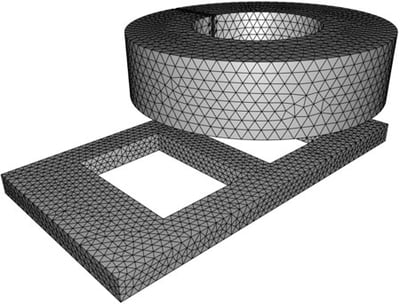
Figure 1: TEAM benchmark case number 3
- TEAM 7: this problem consists of a thick aluminum plate with a hole placed eccentrically and asymmetrically in a non-uniform magnetic field. The field is produced by the excited current, which varies sinusoidally over time (Figure 2).
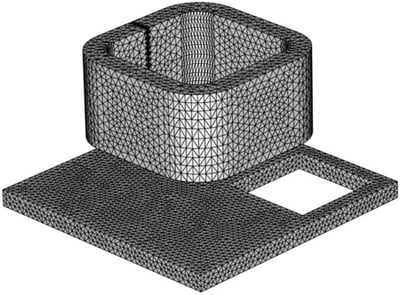 Figure 2: TEAM benchmark case number 7
Figure 2: TEAM benchmark case number 7
The magnetic field results given by the TEAM cases were compared to the numerical results (Figure 3).
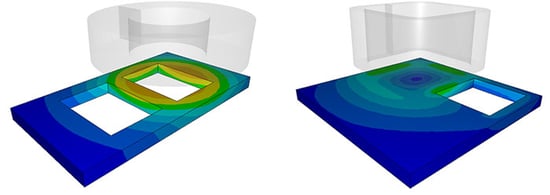
Figure 3: Magnetic field results in black vs. simulation in red: a) TEAM 3 and b) TEAM 7
Error estimators were built using field recovery strategies along with fundamental principles of electromagnetism. In the first stage of the project, error estimators are verified by performing a convergence analysis on decreasing uniform mesh sizes (Figures 4 and 5).
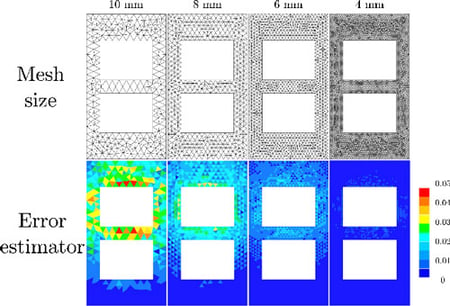
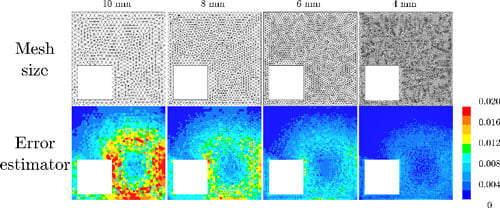
Figure 4 and 5: TEAM 3 and 7 case convergence analysis
The next step, which is under way, consists in using the error estimator with automatic remeshing technology to enable faster and more accurate electromagnetic computations for various industrial applications such as induction heating, electromagnetic stirring and magnetic pulse forming.
Please contact us to have more info
ConfERENCE ICTP: simulation of magnetic pulse forming process
José Alves, Scientific Development Engineer at Transvalor, held a presentation at the International Conference on the Technology of Plasticity (ICTP 2021) on "Advancements in the simulation of Magnetic Pulse Forming Processes with FORGE®".




